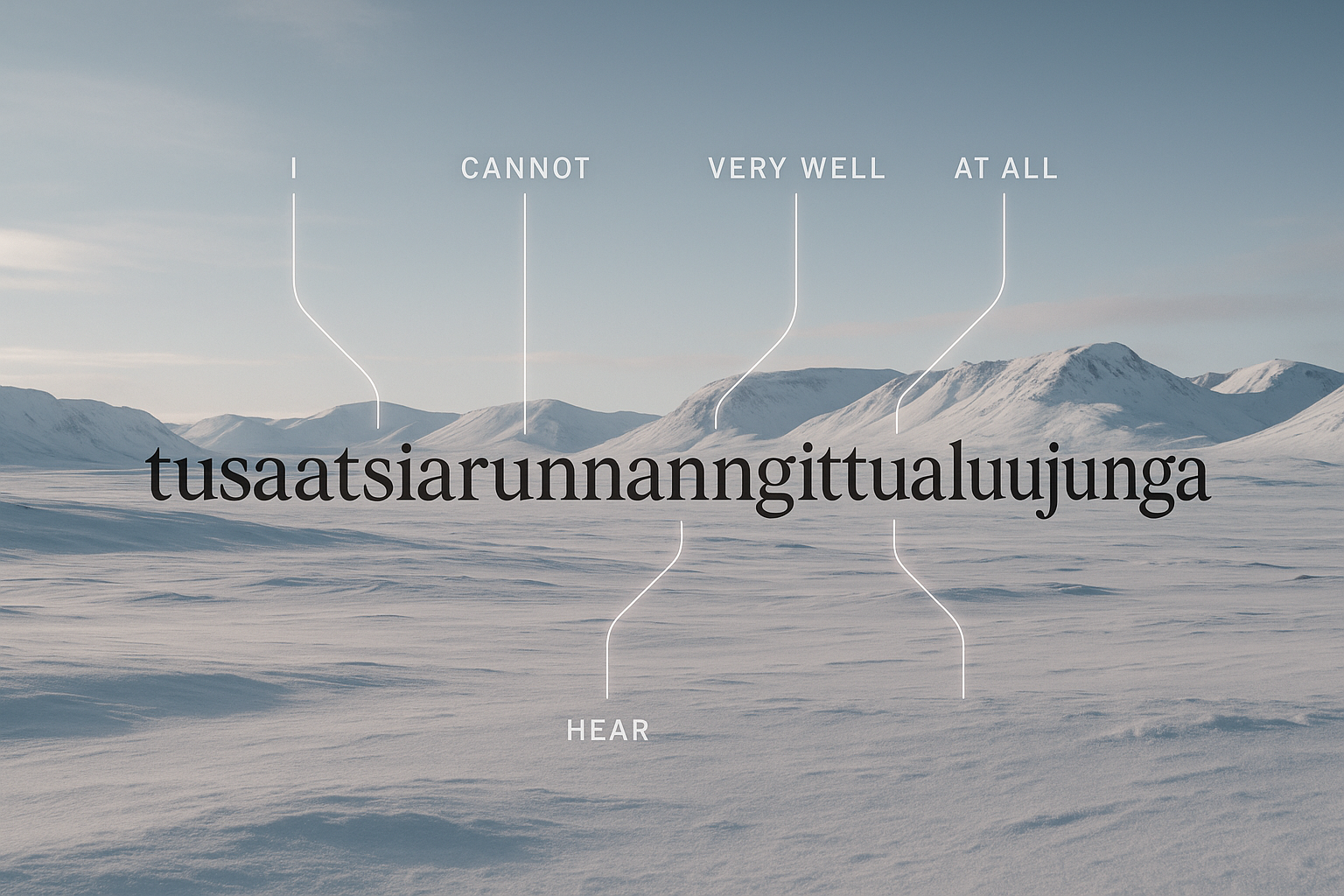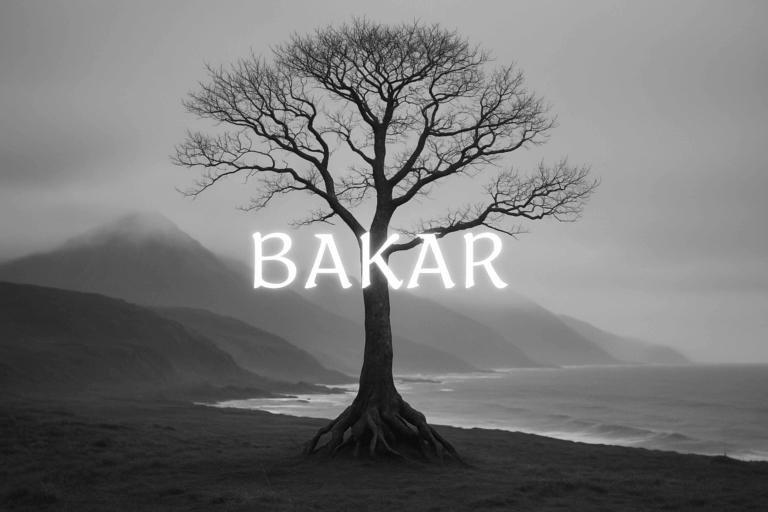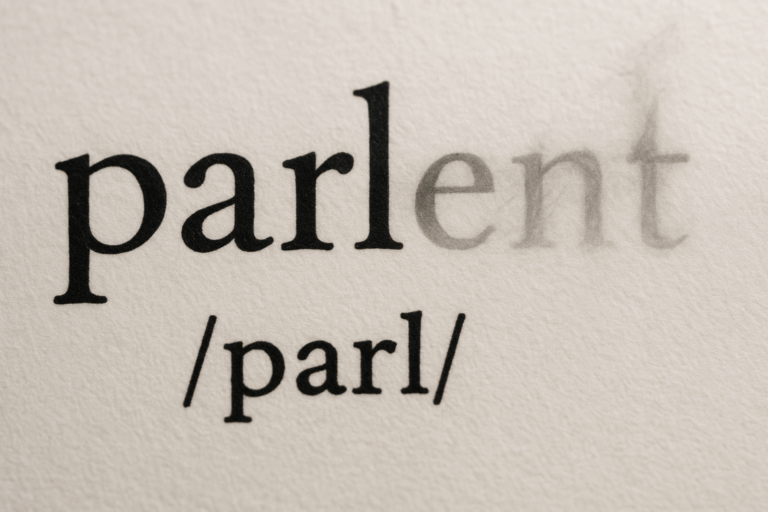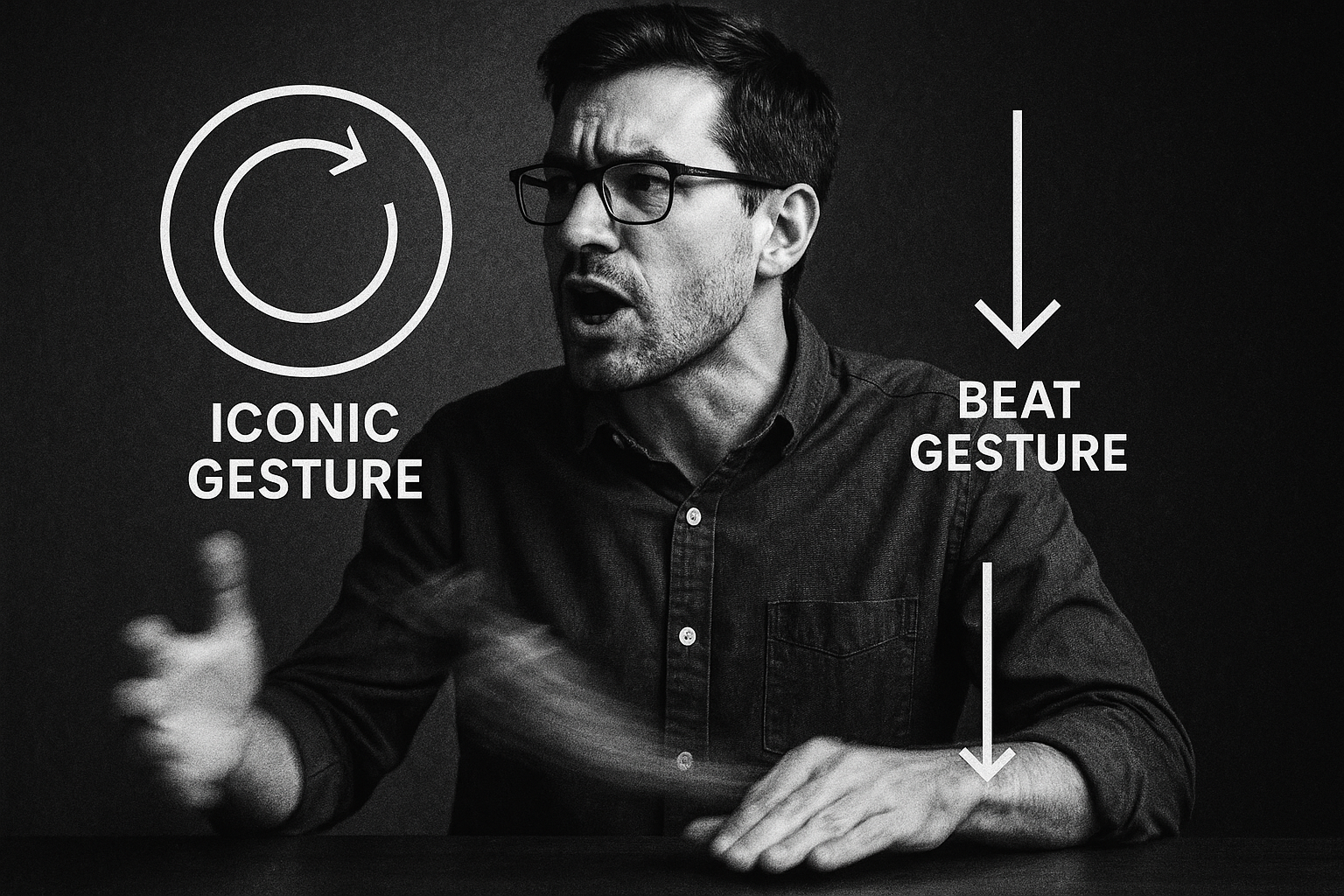Imagine trying to say, “I can’t hear very well.” In English, that’s five words. Now, imagine saying it in a single, perfectly grammatical word: Tusaatsiarunnanngittualuujunga. Welcome to the mind-bending world of polysynthetic languages, where the boundary between a word and a sentence doesn’t just blur—it vanishes entirely.
These remarkable linguistic systems, found in languages like Inuktitut in the Arctic, Mohawk in North America, and Sora in India, challenge our fundamental assumptions about how language works. They don’t just string words together; they build them, weaving nouns, verbs, and modifiers into an intricate tapestry of meaning within a single verbal complex. Let’s take a deep dive into how these one-word sentences are constructed and what they reveal about the human capacity for expression.
What Exactly is a Polysynthetic Language?
To understand polysynthesis, it helps to see where it fits on the spectrum of language types. Linguists often classify languages based on how they form words:
- Analytic (or Isolating) Languages: Think of Vietnamese or Mandarin Chinese. Here, words are typically single units of meaning (morphemes), and grammar is conveyed through word order and standalone particles. “I love you” is three distinct words with three distinct meanings.
- Agglutinative Languages: Languages like Turkish, Finnish, or Japanese “glue” different affixes onto a root word, with each affix carrying one specific grammatical meaning. For example, in Turkish, evlerimden means “from my houses,” built from ev (house) + -ler (plural) + -im (my) + -den (from).
- Fusional Languages: In languages like Spanish, Russian, or Latin, a single affix can carry multiple meanings at once. The “-o” in the Spanish word hablo (“I speak”) simultaneously indicates the first person, singular number, and present tense.
Polysynthetic languages take the principles of agglutination to an extreme. They are characterized by a very high morpheme-to-word ratio, meaning they pack a phenomenal amount of information into one word. But their defining feature is the ability to incorporate multiple lexical roots (like nouns and verbs) into a single, complex verb form. The verb doesn’t just describe an action; it becomes a dynamic scaffold that holds the entire event.
The Building Blocks: A Verb-Powered Engine
In a polysynthetic language, the verb is the engine of the sentence-word. It serves as a central core to which other elements are systematically attached as prefixes, suffixes, and even infixes (morphemes inserted into the middle of a root). These attachments aren’t random; they follow a strict grammatical order.
A single polysynthetic word can contain:
- A verb root: The core action (e.g., “to see,” “to build,” “to go”).
- Pronominal affixes: Information about the subject and object (“I-her,” “he-it,” “they-me”).
- Noun roots: The objects or instruments of the action (e.g., “house,” “fish,” “hand”). This is a key feature called noun incorporation.
- Adverbial information: Modifiers that describe how, when, or where the action takes place (“quickly,” “again,” “on the ground”).
- Tense, aspect, and mood: Markers that indicate time (past, present, future), duration (ongoing, completed), and attitude (is it a statement, a question, a command?).
The Art of Noun Incorporation
Noun incorporation is one of the most fascinating features of polysynthesis. Instead of placing a noun next to a verb as a separate object, the noun root itself is merged directly into the verb complex. This creates a new, highly specific verb.
Consider this example from Mohawk, an Iroquoian language:
Wa’kenaktahnú:ni’
This single word means “I am in bed” or “I have gotten into my bed.” Let’s break it down:
- wa’- (a prefix indicating a past event)
- -ke- (a pronominal prefix for “I”)
- -nakt- (the noun root for “bed”)
- -a- (a verb root meaning “to be in a place”)
- -hnu:ni’ (a suffix indicating a completed action)
By incorporating “bed” (nakt) into the verb, the language creates a new, specific action: “to-be-in-bed.” This is different from saying “I am in the bed,” which would treat the bed as a distinct, separate entity. Incorporation makes the noun a generic part of the activity itself. It’s not just eating; it’s “fish-eating.” It’s not just picking; it’s “berry-picking.”
Masters of Synthesis: Examples from Around the World
Let’s look at how this plays out in a few different languages.
Inuktitut (Canada, Greenland)
We started with the Inuktitut word for “I can’t hear very well,” Tusaatsiarunnanngittualuujunga. It’s a stunning example of chaining suffixes to modify a root idea.
tusaat- (to hear)
+ -siari- (well)
+ -unnaq- (to be able to)
+ -nngit- (not)
+ -tualuu- (very much)
+ -junga (I, in the present tense)
Each piece adds a new layer of meaning, building a description of incredible precision, all anchored to a single verb root.
Sora (India)
Sora, a language from the Munda family, also demonstrates complex noun incorporation. To say, “He will catch a boar for me,” you can use one word:
ɲam-kɨn-sɛl-t-e-n
The structure here is a bit different, but the principle is the same:
- ɲam- (the verb root for “catch”)
- -kɨn- (the noun root for “boar”)
- -sɛl- (a verbal affix meaning “to give,” used here to show the action is for someone’s benefit)
- -t- (a marker for the third-person subject, “he”)
- -e- (a marker for the future tense)
- -n (a marker for the first-person object, “me”)
The sentence isn’t just a list of parts; it’s a fully integrated event: “he-will-boar-catch-for-me.”
More Than Just Grammar: A Different Worldview?
Why do languages develop such different structures? Some linguists and anthropologists suggest that polysynthetic grammar may reflect and reinforce a particular worldview. By centering language on the verb and integrating participants and objects into it, these languages emphasize processes, events, and relationships over static, independent objects.
The world is portrayed not as a collection of things that actors manipulate, but as a dynamic series of interconnected events. “Boar-catching” is a single, unified activity. “Being-in-bed” is a state of existence. This holistic structure provides a powerful and efficient way to describe the world, but it also presents immense challenges for language learners and for revitalization efforts, as a deep understanding of the intricate morpheme system is required for fluency.
Exploring polysynthetic languages is a powerful reminder that the grammar we use every day is just one of countless ways to organize thought. The one-word sentence isn’t a linguistic curiosity; it’s a testament to the creativity of the human mind and the beautiful diversity of its expression.










